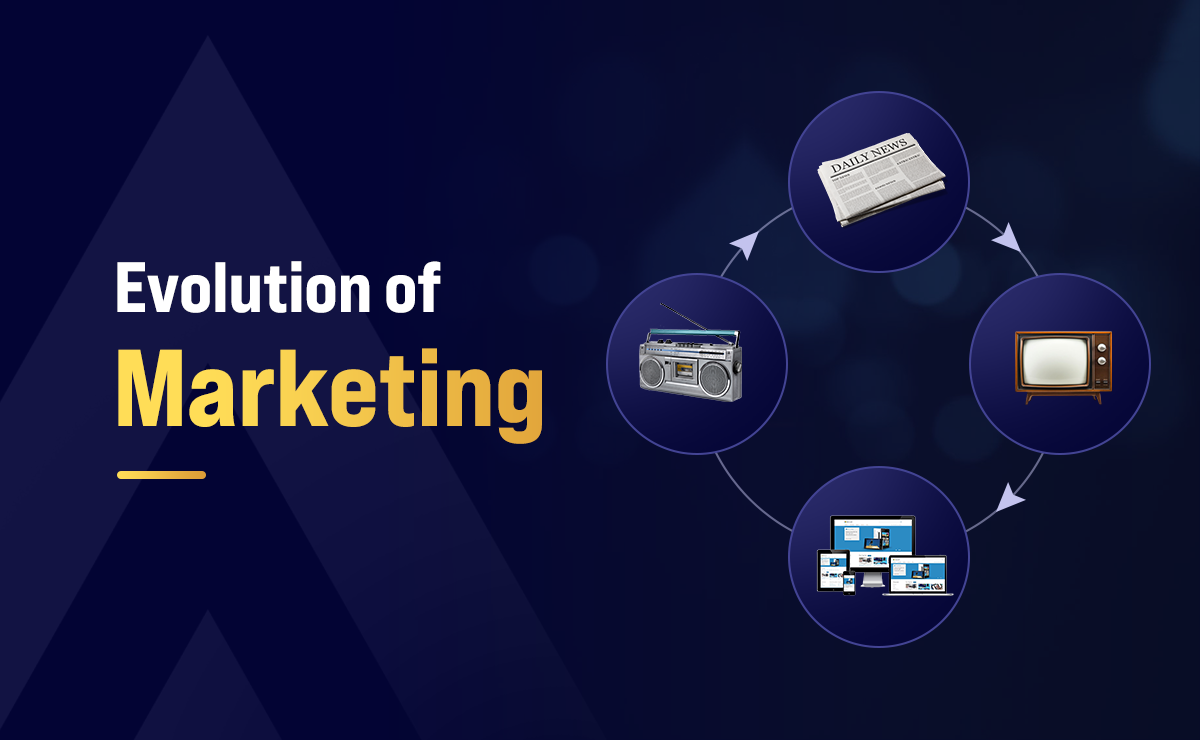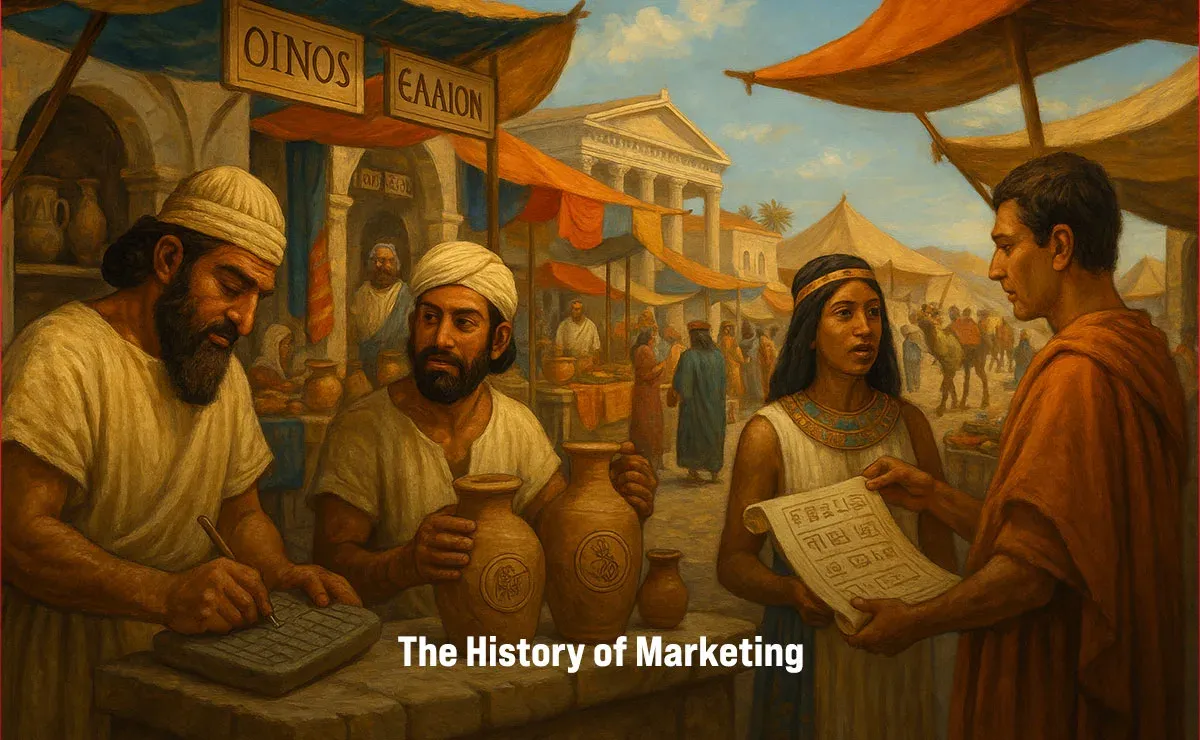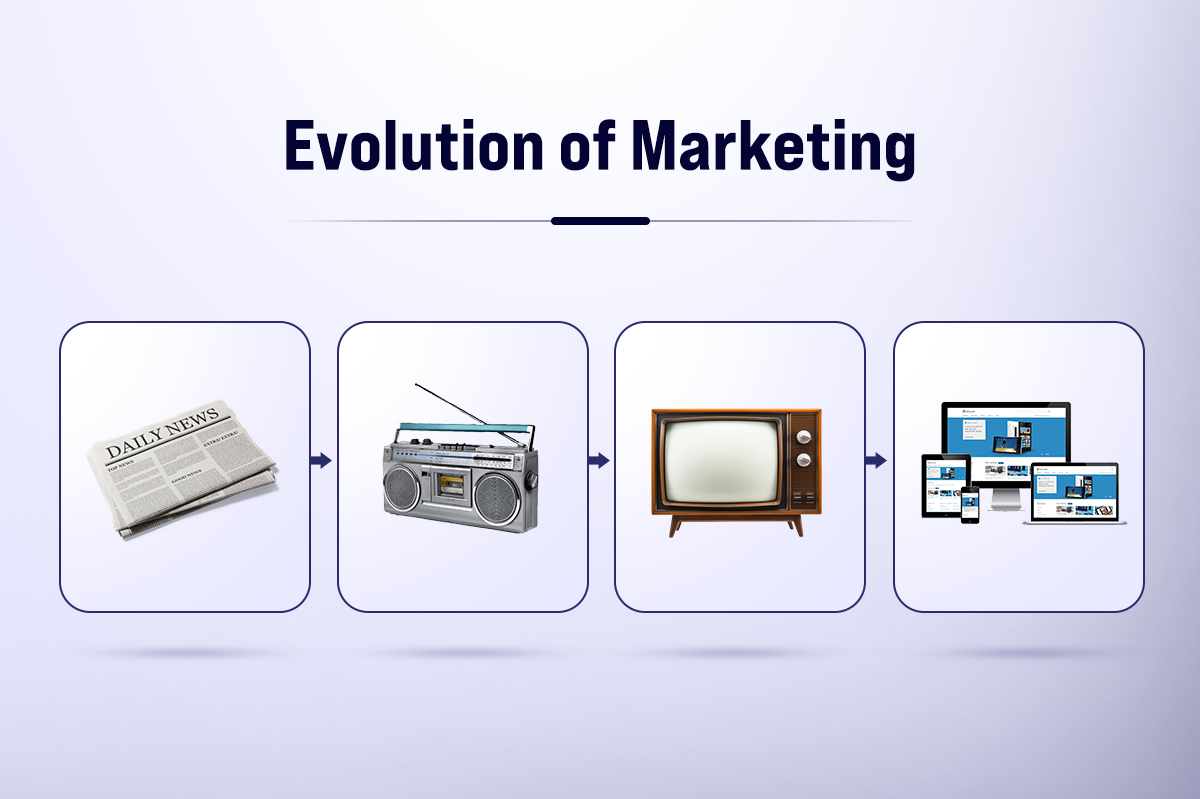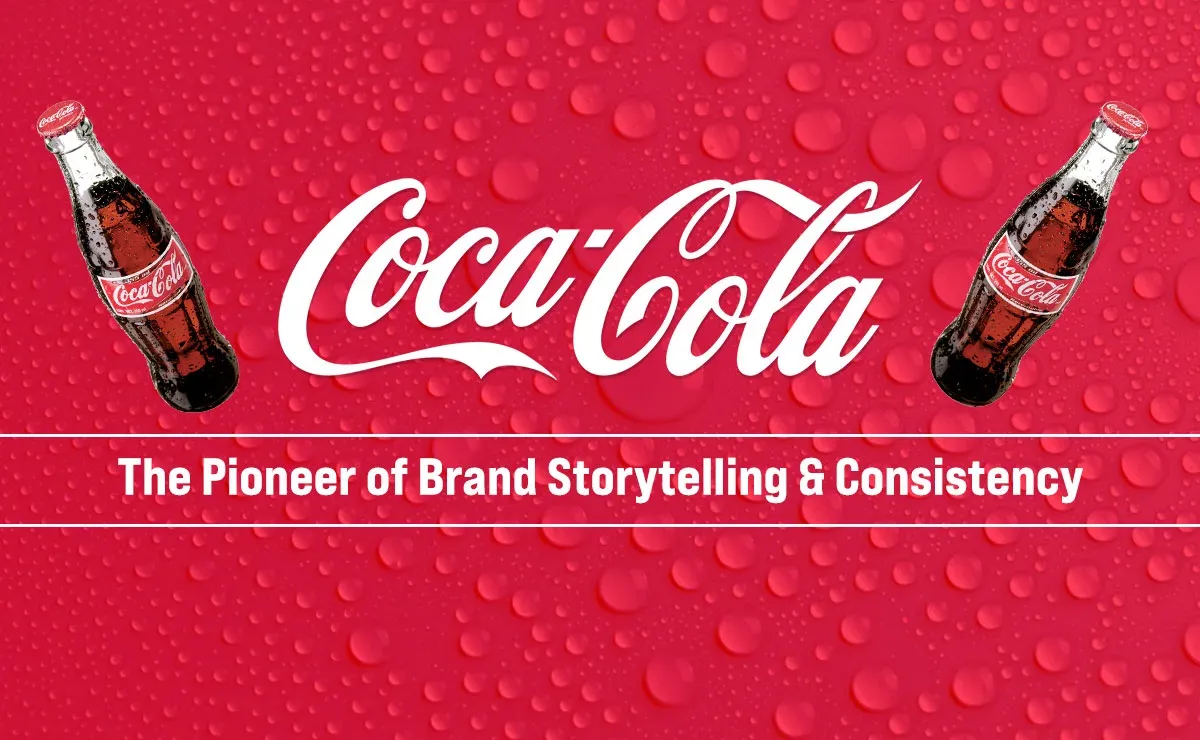Evolution of Marketing

Since the traditional days of print and television media, the industry has undergone a shift in its global marketing capabilities with the advent of the digital revolution. Ever since its inception, from traditional mass production to modern digital and socially neutral marketing tactics, businesses have been adapting their strategies regularly to stay current with trends and remain competitive.
Additionally, social media and online video content are already the fastest-growing forms of digital campaigns, indicating a significant paradigm shift in marketing dynamics. Let’s examine these shifts in more detail as we answer the question: How has marketing changed, and has it changed for the better?
Marketing has grown beyond conventional approaches to online marketing, information-based campaigns, and the creation of a customer-centric experience. At Altera Institute, students are provided with a practical learning experience in the latest marketing tools and techniques, on the premise that this will promote career growth and employment opportunities. Discover how our programs prepare you for a dynamic marketing environment.
The History of Marketing

Marketing in Antiquity
Even before the term "marketing" became a separate field of study, early humanity had been trading and conducting commerce, through which they would marshal and apply the core tenets of marketing to market products and services.
Key Developments:
- Barter System: It was the means of communication in the first stages of trade in which individuals traded goods and services through reciprocal necessity. Personal relations and trust were instrumental in the development of trade.
- Early Branding: Traders used unique symbols, seals, and stamps to mark their goods, ensuring authenticity and building a reputation. The ancient Egyptians, for example, used distinct symbols on goods such as pottery and papyrus.
- Word-of-Mouth Promotion: Merchants did not have to rely on written advertisements; instead, they utilized word-of-mouth advertising, town criers, and outdoor announcements to promote their products.
- Markets and Bazaars: The markets were places of trade where sellers displayed their products to buyers, as is still the case today in retail shops. The Silk Road is renowned for uniting the East and the West, ultimately facilitating the exchange of products, ideas, and marketing practices between civilizations.
Examples:
- Mesopotamian Merchants (3000 BCE): Used clay tablets to document trade transactions and promote goods.
- Greek and Roman Markets (500 BCE – 400 CE): Used signs and inscriptions to advertise shops and goods.
- Indian Trade (Indus Valley Civilization, 2600 BCE): Artisans marked their pottery and seals, an early form of branding.
Although the marketing of products in ancient times was primitive, it laid the foundation for more advanced and strategic advertising methods in the future.

The Medieval Era: The Rise of Marketplaces
This was a period of revolution in the marketing dynamics where feudal economies had shifted to broadening trade networks during the Middle Ages (5th-15th century). Cities and towns transformed into commercial hubs, and new marketing methods were developed to attract customers.
Key Developments:
- Guilds and Trade Regulations: The guilds of the merchants regulated quality and established prices and product standards, which can be interpreted as an early brand consistency.
- Town Markets and Fairs: The local and regional markets developed as merchants used banners, signs, and heralds to attract customers to their businesses.
- Personal Selling: Sellers actively engage with buyers, demonstrating products and using persuasive techniques to close sales.
- Emergence of Advertising: Wooden signs and painted advertisements had been in use in shops to advertise their products, marking a pioneer transition to brand personality.
Examples:
- Fairs and Bazaars in medieval Europe: Merchants would set up booths in open markets just as they do today.
- Indian and Arab Traders: Used storytelling and exaggerated claims to enhance the perceived value of their products.
Although marketing activities were primarily local during this period, the development of global trade systems necessitated more advanced promotional methods.
The Age of Exploration and Consumer Awareness (17th-18th Century)
Marketing underwent significant changes during the Renaissance and the Age of Exploration (15th-18th century). With the growth of trade routes worldwide, consumer culture began to form, primarily due to the increasing importation of exotic goods.
Key Developments:
- Global Trade Expansion: European explorers opened up new trade routes, which led to the exchange of spices, textiles, and tea, among other items, into foreign markets.
- Emergence of Corporate Identity: Organizations like the British and Dutch East India Companies employed distinctive logos and product packaging to establish recognizable commercial identities.
- Printed Advertisements: With the invention of the printing press in the 15th century, businesses started using posters, pamphlets, and newspapers to advertise their products.
- Luxury Goods and Aspirational Marketing: As the merchant class emerged, luxury goods were in high demand, and sellers employed exclusivity and premium placement to attract wealthy customers.
Examples:
- First Newspaper Advertisements (17th Century): London and Amsterdam had businesses that utilized newspapers to advertise goods such as coffee, tobacco, and medicines.
- East India Companies (1600s): Used branding and monopolistic strategies to dominate trade.
- Indian and Persian Textile Merchants: Promoted exotic fabrics to European markets through catalogs and samples.
This was the time when the initial efforts in mass communication, particularly in advertising, were taking shape, which led to industrialization.
The Industrial Revolution: The Birth of Modern Marketing (19th Century)
The Industrial Revolution, spanning the 18th to 19th centuries, brought about significant changes in marketing with the introduction of mass production, urbanization, and new forms of communication. With increased competition, there was a greater need to find new ways of attracting consumers.
Key Developments:
- Mass Production and Distribution: Goods were manufactured on a large scale, and thus, marketing on a large scale was required.
- Packaging and Branding: Companies began using unique containers and wrappings that differentiated their products from those of their competitors.
- Print Advertising Flourishes: Newspapers and magazines became the primary channels for advertisements.
- Department Stores and Window Displays: Commercial establishments used their façades and artistic merchandise arrangements to attract prospective clientele.
Examples:
- Coca-Cola’s Branding (1886): Created one of the first mass-marketed brands with a distinctive logo and bottle design.
- Unilever’s Pears Soap (1890s): Used one of the earliest celebrity endorsements and emotional appeal in advertising.
- India’s Textile Industry: Promoted Khadi and indigenous fabrics as a response to British imports.
This period marked the true beginning of modern marketing strategies, whereby businesses moved from just selling products to creating brand identities.
The 20th Century: Marketing Becomes a Science
Marketing took the form of a well-structured discipline in the 20th century with scientific approaches, consumer psychology, and advertising innovations.
Key Developments:
- The Birth of Market Research (1920s): In the 1920s, firms started studying the behavior and tastes of consumers.
- The Rise of Advertising Agencies: Professional advertising agencies, such as J. Walter Thompson, helped clients develop effective campaigns.
- Television and Radio Marketing (1950s–1970s): Television revolutionized commercial advertising in mass communication, meaning that brands were no longer conveyed in the same way.
- Brand Loyalty and Relationship Marketing (1980s): Businesses sought to establish long-term relationships with customers and explored the possibilities of customer retention.
Examples:
- The campaign, Utterly Butterly Delicious (1966) by Amul, utilized both a sense of humor and the themes applicable to the Indian market in order to build brand loyalty.
- Nike's "Just Do It" Marketing Campaign (1988): Positioned the company as a representation of an inspiring way of life.
At the turn of the 20th century, with the emergence of marketing as a strategic business function, a digital revolution was already on the horizon.
The Digital Marketing Era
Digital technologies and the World Wide Web have significantly transformed the marketing landscape. The Indian subcontinent is a significant contributor to the modern global digital marketplace, characterized by burgeoning digital commerce and entrepreneurial ventures.
Key Developments:
- Social Media Marketing (2000s–Present): This is the era of Facebook, Instagram, and LinkedIn as the most powerful influencers in the field of marketing.
- AI-Driven Personalization: Companies use data analytics to create highly targeted, hyper-personalized marketing campaigns.
- Influencer Marketing: Social media influencers shape consumer behavior, replacing traditional celebrity endorsements.
- India’s Global Digital Growth: Indian based firms like Flipkart, Zomato, and Paytm have transformed the online marketing industry.
Examples:
- Swiggy and Zomato’s real-time marketing utilizes social media trends to engage users.
- Tata and Reliance head to digital expansion, leveraging artificial intelligence for information analysis to achieve global market dominance.
With marketing still evolving, AI, VR, and blockchain are seen as defining the future and making the industry more dynamic than ever.
The Evolution of Marketing

With the history of marketing in mind, people have been bartering, that is, exchanging goods and services face-to-face, even before the invention of money. The use of word of mouth was also important during this period, and trust and personal referencing were the main motivations behind trade. As societies evolved over time, signage and town criers began to be used to advertise businesses.
The Production Concept
The preliminary phase of marketing was primarily focused on production. The Industrial Revolution had seen businesses focus on efficiency and mass production, assuming that as long as products were affordable and available, customers would purchase them.
This approach rested on the principle: 'If you build it, they will come.' Companies invest in mass production, reduced production, and distribution chains. The demand for manufactured goods was believed to be so high that there was no need for aggressive marketing.
Key Characteristics of the Production Concept:
- Pay attention to the efficiency of production.
- Pay attention to reducing production costs.
- Little interest in customer preferences.
- Mass production methods became popular.
Although this model worked well during the early days of industrialization, it was later realized that consumers also appreciated factors beyond availability and affordability.
The Product Concept
The demand changed as the markets became oversaturated with mass-produced goods. Human beings started to focus on quality, performance, and innovation. This marked the emergence of the product concept, whereby a company focused on developing better products rather than merely producing high quantities of them.
Businesses assumed that customers would naturally gravitate toward the best products, leading to an emphasis on continuous product improvement. However, this era also saw the emergence of marketing myopia—a tendency for businesses to focus excessively on their products and not enough on the evolving needs of consumers.
Key Characteristics of the Product Concept:
- Pay attention to the quality of the product and innovation.
- It is a belief that a superior product will sell itself.
- The possibility of failing to adapt to evolving consumer tastes.
Example: The downfall of railroads because of not acknowledging competition with automobiles and airplanes.
This stage highlighted the importance of understanding not only what companies are capable of producing, but also what customers want.
The Selling Concept
By the 1920s, mass production was no longer a competitive advantage, with the majority of companies having developed an ability to produce the same product. The increase in competition in the marketplace meant that firms had to engage in aggressive marketing to persuade customers to choose their goods. This marked the shift to the selling concept, where businesses relied on aggressive advertising methods and personal selling tactics to boost sales.
High-pressure sales strategies, glitzy advertisements, and massive advertising campaigns emerged during this period. The emphasis was on selling whatever was manufactured, rather than personalizing the products for consumers.
Key Characteristics of the Selling Concept:
- Heavy emphasis on advertising and promotions.
- Strong reliance on personal selling and persuasion.
- Emphasize short-term sales as compared to long-term relationships.
Example: Direct mail campaigns, telemarketing, and door-to-door sales.
This is the approach that helped to increase sales, but it was not long-term. Aggressive sales strategies were also viewed as not so effective, and this led to a change in approach to a customer-oriented approach.
The Marketing Concept
By the mid-20th century, businesses recognized that selling alone wasn’t enough—they needed to understand consumer needs before creating products. The marketing concept introduced a customer-focused approach, where businesses identified and responded to the demands of their target audience.
Instead of forcing products onto customers, companies now use market research to understand consumer desires, segment their audience, and develop products that cater to those desires. Relationship marketing also emerged during this period, as companies shifted their focus from making a single sale with each customer to creating long-term relationships.
Key Characteristics of the Marketing Concept:
- Understanding customer needs and then creating products that meet those needs.
- Product development through market research.
- Attend to customer satisfaction and customer relationships.
Example: Brands such as Coca-Cola and Nike are also investing in emotional branding and customer interaction.
This revolution in the marketing concept transformed the industry into the modern marketing strategies we know today.
The Societal Marketing Concept
With the increase in the level of environmental and social consciousness, organizations became aware that they had a duty, which did not merely involve making profits. Hence, A community-based marketing strategy was established, which emphasized business ethics, environmental consciousness, and social responsibility.
Companies began to consider the long-term effects of their marketing choices on society, the environment, and future generations. This notion gave rise to corporate social responsibility (CSR), in which companies incorporated moral aspects of their marketing and business processes.
Key Characteristics of the Societal Marketing Concept:
- Pay attention to social and environmental responsibility.
- Striking a balance between profitability and ethics.
Example: Brands like Tesla promote sustainability and clean energy.
Customers also expect businesses to align with their values, and as a result, social responsibility is a crucial aspect of a modern marketing strategy.
Brands That Revolutionized Marketing
Coca-Cola: The Pioneer of Brand Storytelling and Consistency

Coca-Cola is the soft drink giant with one of the most recognizable commercial identities in the world, and its market dominance can be attributed to its creative promotional activities.
Key Marketing Innovations:
- Brand Consistency: Coca-Cola has maintained its iconic red and white branding, typography, and logo for over a century, ensuring instant recognition.
- Emotional Advertising: The brand’s advertising has always focused on emotions—happiness, friendship, and togetherness. Personal connections with consumers were established through campaigns such as Open Happiness and Share a Coke.
- Seasonal and Experiential Marketing: Coca-Cola made significant contributions to the modernization of the Santa Claus image through its holiday advertisements in the 1930s.
Marketing Impact:
- Proved the importance of brand awareness and emotion-focused story in marketing.
- Innovated influencer partnerships, star endorsements, and tailored marketing programs.
Nike: The Master of Aspirational Branding
Nike redefined what sports marketing is and should be as the brand became associated with inspiration, empowerment, and success.
Key Marketing Innovations:
- The strength of slogans: The “Just Do It” campaign (1988) proved to be one of the most memorable taglines, motivating generations of athletes and consumers.
- Celebrity and Athlete Endorsements: Nike has perfected using sportspeople to promote the brand's credibility, as with Michael Jordan and, most recently, Cristiano Ronaldo.
- Cause-Based Marketing: Nike has taken daring stances on social issues, including the Colin Kaepernick campaign, which resonated with socially conscious customers.
- Innovative Digital Campaigns: Nike integrates technology with marketing through apps, wearables, and interactive campaigns.
Marketing Impact:
- Aspirational marketing is popular, making consumers feel that they belong to a high-performance community.
- Illustrated the potential of using social causes to build loyalty and sales for brands.
Apple: The Art of Desire and Innovation
Apple has perfected the art of making technology an integral part of one's lifestyle. Instead of just selling products, Apple sells an experience—one that represents creativity, simplicity, and exclusivity.
Key Marketing Innovations:
- The Power of Storytelling: Apple’s iconic “1984” Super Bowl ad wasn’t just a commercial—it was a cultural statement, positioning the Macintosh as a symbol of rebellion and individuality.
- Minimalist Branding: Apple's advertising focuses less on the technical specifications of its products and more on the sleek design and user experience, making its products aspirational.
- Event-Based Marketing: Apple's product launches are as anticipated as major global conferences, and new releases become worldwide spectacles.
- "Think Different" Approach: By appreciating innovators such as Einstein, Apple had the power to connect with the audience on a deeper, emotional level.
Marketing Impact:
Apple proved that a brand could build a loyal following of customers based on storytelling, simplicity, and exclusivity. Its strategy inspired countless companies to change from selling features to selling experiences.
Dove: Redefining Beauty Through Social Purpose
Dove revolutionized the marketing of beauty products by replacing the ideals of perfection with the ideals of authenticity. The "Real Beauty" series challenged conventional industry norms by confronting unrealistic expectations of physical appearance and promoting bodily acceptance.
Key Marketing Innovations:
- Authenticity Over Perfection: Instead of featuring supermodels, Dove featured real women of all shapes, colors, and ages, making beauty relatable.
- Emotional Branding: The campaign resonated with millions of people, making Dove a brand that is associated with self-acceptance and empowerment.
- Localized Storytelling: In India, Dove localized its message to challenge colorism, thus making the brand even more relevant to its audience.
Marketing Impact:
Dove demonstrated that aligning with social values can foster profound emotional connections with consumers. This groundbreaking approach inspired commercial entities worldwide to adopt purpose-centered messaging as part of their marketing frameworks.
MDH Masala: Building a Legacy Through Trust and Simplicity
MDH Masala is a household name in India that built its empire not through flashy ads but trust, consistency, and cultural relevance.
Key Marketing Innovations:
- Brand Recognition Through a Familiar Face: Founder Mahashay Dharampal Gulati appeared in almost every advertisement, creating an image of authenticity and reliability.
- Jingles That Stick: The legendary “Asli Masala Sach Sach, MDH, MDH” jingle has become an indelible part of the Indian pop culture.
- Cultural Linkage: MDH embraced the cultural diversity of India, in which spices are meant to remind one of home-cooked meals.
- Word-of-Mouth Marketing: MDH has created its own reputation in terms of quality and consumer trust long before the advent of digital marketing.
Marketing Impact:
MDH demonstrated to us how authenticity and cultural connection can be more powerful than modern advertising gimmicks. Its strategy is proof that simplicity and trust can sustain a brand for generations.
Tata Tea: Business Driven to Social Change
Tata Tea changed the marketing landscape by demonstrating that a brand can do more than just sell products - it can drive social change.
Key Marketing Innovations:
- “Jaago Re” Campaign: This campaign made a simple cup of tea a symbol of awakening, targeting issues such as voter awareness, gender equality, and corruption.
- Emotional Storytelling: Tata Tea did not just settle for the customary product sales but applied real-life problems to relate to consumers on a more personal level.
- Long-Term Impact: The campaign wasn't a one-time effort, but rather a sustained movement that had a lasting impact on civic awareness in India.
Marketing Impact:
Tata Tea has demonstrated that purpose-based marketing is not only used to build brands but also to drive community development. It established the standard for the brands that wanted to make a difference and achieve business success.
FAQs
Q1. What Has Digital Marketing Changed about the Way Businesses Work?
Ans: Digital marketing has changed the way of doing business through targeted advertising, real-time customer engagement, and making data-driven decisions. Unlike traditional marketing, which employs one-size-fits-all marketing strategies, digital marketing enables businesses to personalize content, track consumer behavior, and refine strategies in real-time. With the help of tools such as SEO, social media, and email marketing, companies can target audiences worldwide at a lower cost and measure campaign effectiveness through accurate analytics.
Q2. How is social media affecting marketing strategies?
Ans: Social media has revolutionized marketing by establishing a two-way communication channel between brands and consumers. It enables businesses to engage with their audience through interactive content, influencer collaborations, and real-time feedback. Social media platforms are extremely powerful advertising tools with the ability to accurately target based on demographics, interests, and online behavior. Additionally, viral marketing and user-created Content have contributed to social media being an integral tool in promoting brand awareness among users, enabling customer loyalty and trendsetting.
Q3. What are the 5 evolutions of marketing?
Ans: Marketing has undergone 5 major stages:
Production Era (Pre-1920s): Focused on mass production and availability rather than consumer needs.
- Sales Era (1920s-1950s): It centered on aggressive selling methods due to increased competition.
- Marketing Concept Era (1950s-1980s): Switched to the emphasis on customer needs and satisfaction, not on rising sales.
- Relationship Marketing Era (1980s-2000s): Emphasized developing customer relationships to achieve long-term customer loyalty.
- Digital & Social Marketing Era (2000s-Present): Makes use of data-driven, online, and customized messaging to communicate with consumers.
Summing Up
Marketing has undergone a remarkable transformation process, evolving over time from its ancient trade roots to become data-driven in the digital world. Each era has influenced the way businesses engage with consumers, adapting to the evolution of technology and reflecting societal values. Today, digital marketing and social media are dominant with the highest reach and personalization.
Going forward, new technologies such as AI and blockchain will continue to redefine the industry. However, there is one thing that will never change: successful marketing is all about understanding the needs of consumers and developing meaningful relationships with them. The future will be of commercial identities that fully accept pro.





